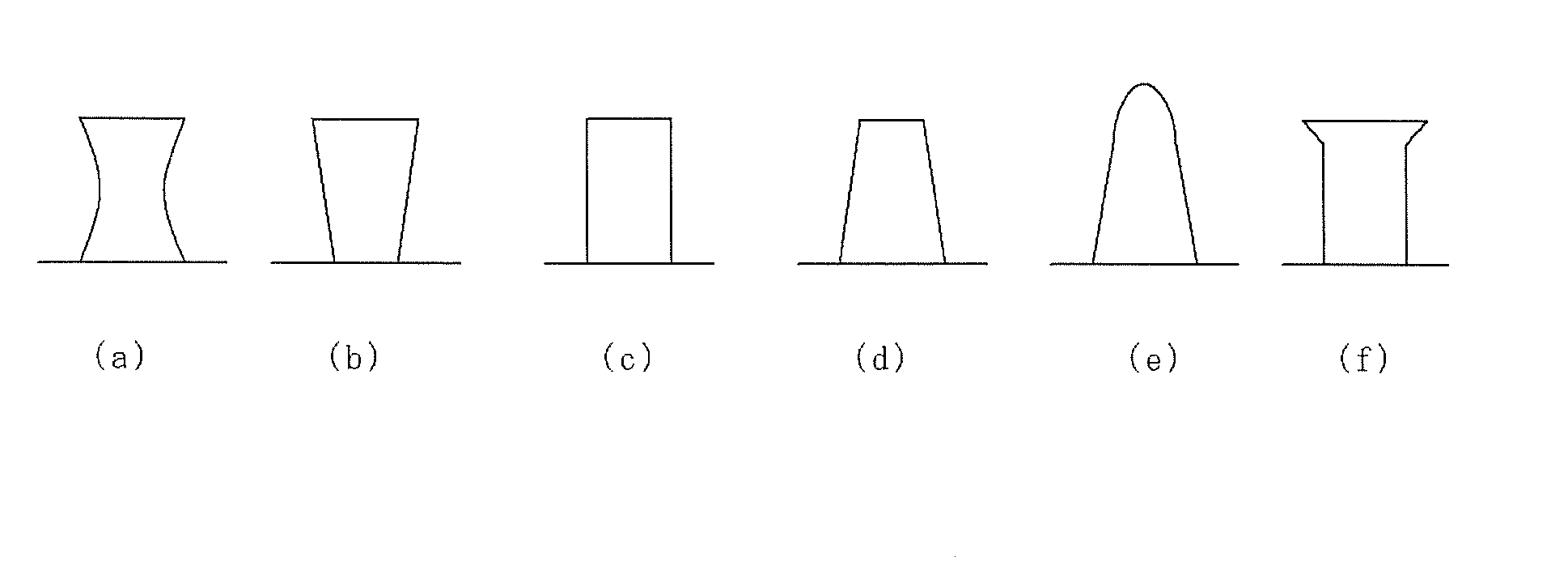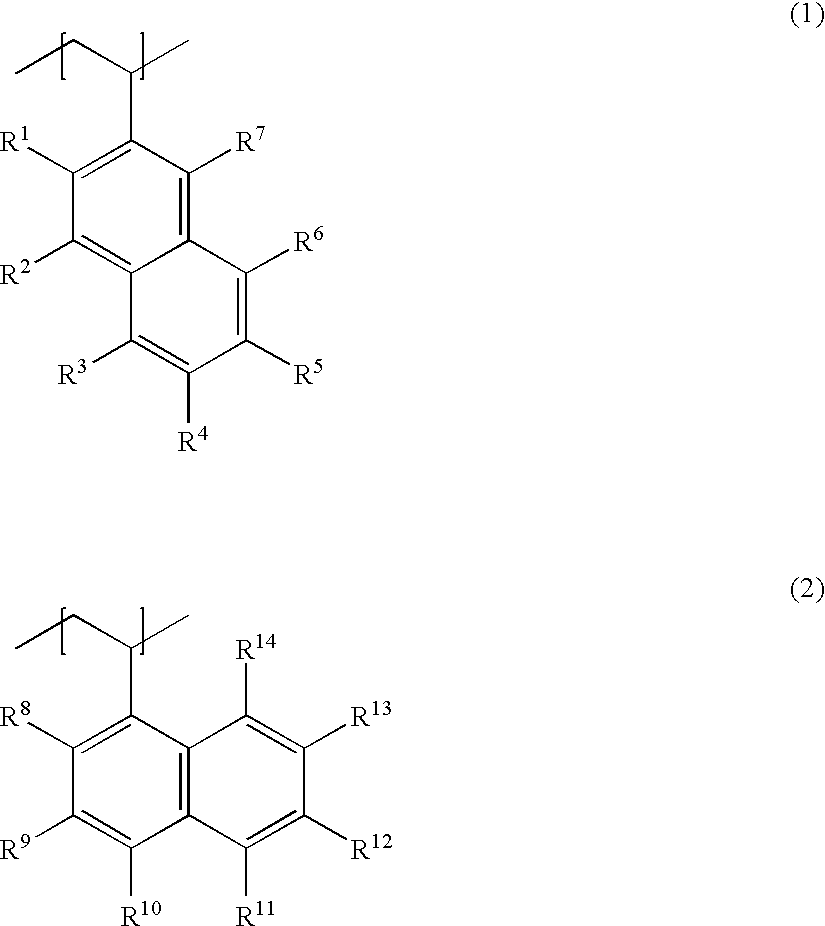Resin for formation of upper antireflective film, composition for formation of upper antireflective film, and resist pattern formation method
a technology of anti-reflective film and composition, which is applied in the direction of photosensitive materials, instruments, photomechanical equipment, etc., can solve the problems of serious standing wave effect, insufficient restraint of standing wave effect, and bad effect produced on the formation of resist patterns, etc., to reduce standing wave effect and blob defects satisfactorily, lead excellent solubility, and reduce standing wave effect
- Summary
- Abstract
- Description
- Claims
- Application Information
AI Technical Summary
Benefits of technology
Problems solved by technology
Method used
Image
Examples
examples
[0189]Hereinafter, the present invention will be described in greater detail by referring to the following Examples. The present invention is in no way limited by these Examples.
1. Examples 1 to 8 and Comparative Examples 1 to 2
[1-1] Synthesis of Resin for Formation of Upper Antireflective Film
[0190]Hereinafter, synthesis examples for polymers including polymers (A-1) to (A-8) and polymers (a-1) to (a-2) will be described. Physical evaluation of the polymers obtained by synthesis examples were conducted according to the methods as follows.
(1) Mw
[0191]These were measured by gel permeation chromatography (GPC) with monodispersed polystyrene as a standard reference material using GPC column (“G2000HXL”×2, “G3000HXL”×1, “G4000HXL”×1) manufactured by Tosoh Corp. under the following analysis conditions: flow rate; 1.0 ml / min., eluate; tetrahydrofuran, column temperature; 40° C.
(2) Copolymerization Ratio
[0192]The copolymerization ratio between the individual monomers was determined accord...
synthesis example 1
[0193]Into a separable flask equipped with a stirrer, a thermostat and a condenser was charged with 30 g of tetrahydrofuran (THF). The system was subjected to bubbling with a nitrogen gas for 15 minutes and then 2.2888 g of 6-vinyl-2-naphthol, 8.2945 g of 1-vinylnaphthalene, 9.4167 g of α-trifluoromethyl acrylic acid and 1.8577 g of 2,2′-azobis(dimethyl 2-methylpropionate) were added. The internal temperature was raised to a temperature of 45° C. After one hour, the internal temperature was raised, so that the reactive components were caused to react with each other for 8 hours while the solution was refluxed at a temperature of about 70° C. The system was then cooled to a temperature of 25° C. Next, the resultant was vacuum-dried to remove the solvent, thereby yielding a copolymer.
[0194]This copolymer had an Mw of 2.7×103, and a copolymerization ratio (% by mole) of 6-vinyl-2-naphthol / 1-vinylnaphthalene / α-trifluoromethyl acrylic acid was 10 / 40 / 50. This copolymer was taken as “polym...
synthesis example 2
[0195]Into a separable flask equipped with a stirrer, a thermostat and a condenser was charged with 30 g of methanol. The system was subjected to bubbling with a nitrogen gas for 15 minutes and then 1.4913 g of 6-vinyl-2-naphthol, 9.4576 g of 2-vinylnaphthalene, 9.0500 g of methacrylic acid and 2.4209 g of 2,2′-azobis(dimethyl 2-methylpropionate) were added. The internal temperature was raised to a temperature of 45° C. After one hour, the internal temperature was raised, so that the reactive components were caused to react with each other for 8 hours while the solution was refluxed at a temperature of about 70° C. The system was then cooled to a temperature of 25° C. Next, the resultant was vacuum-dried to remove the solvent, thereby yielding a copolymer.
[0196]This copolymer had an Mw of 19.5×103, and a copolymerization ratio (% by mole) of 6-vinyl-2-naphthol / 2-vinylnaphthalene / methacrylic acid was 5 / 35 / 60. This copolymer was taken as “polymer (A-2)”.
PUM
| Property | Measurement | Unit |
|---|---|---|
| wavelength | aaaaa | aaaaa |
| wavelength | aaaaa | aaaaa |
| wavelength | aaaaa | aaaaa |
Abstract
Description
Claims
Application Information
 Login to View More
Login to View More - R&D
- Intellectual Property
- Life Sciences
- Materials
- Tech Scout
- Unparalleled Data Quality
- Higher Quality Content
- 60% Fewer Hallucinations
Browse by: Latest US Patents, China's latest patents, Technical Efficacy Thesaurus, Application Domain, Technology Topic, Popular Technical Reports.
© 2025 PatSnap. All rights reserved.Legal|Privacy policy|Modern Slavery Act Transparency Statement|Sitemap|About US| Contact US: help@patsnap.com



